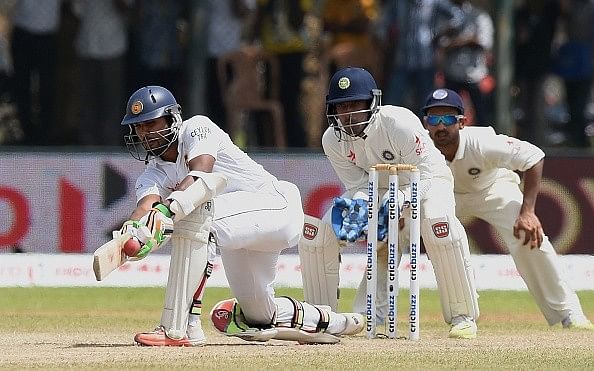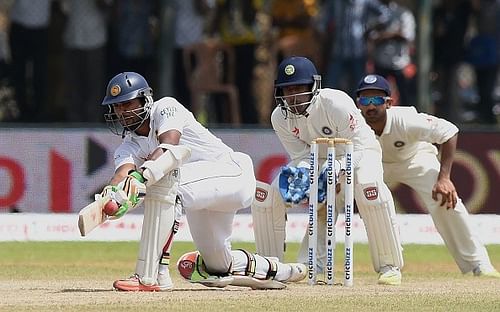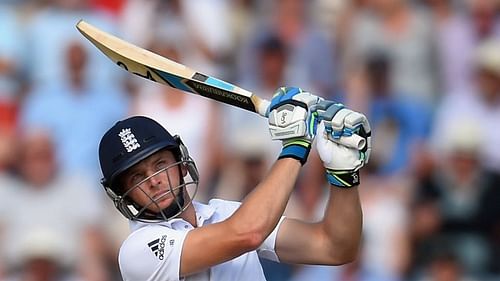
The new crop of Test match Wicketkeepers

28 February 2001: The Mumbai crowd was on its feet as the visiting Australian batsmen were still finding their feet at playing Harbhajan Singh. Reduced to 99 for 5 in response to India's 176, entered Adam Gilchrist. A couple of hours later, the legend had a Test match hundred against his name. An 84 ball century which turned the game around in Australia's favour. Australia went on to win the match by 10 wickets.
12 years later, it was time for an Indian keeper to inflict similar pain on Australia on a hot February afternoon in Chennai. MS Dhoni went from 37 not out at lunch to 206 not out at stumps on the same day. From nearly 200 runs behind when Dhoni walked in, India ended their first innings by nearly the same amount ahead. India recorded an 8 wicket win and went on to win the next three matches of the series to inflict a 4-0 whitewash on Australia.
Over the years, Adam Gilchrist and many others have changed the definition of a test match wicketkeeper. Apart from safe glovework behind the stumps, it's also about being productive in front of the stumps with bat in hand. Ever since, it's been a case of taking the revamped definition forward: the age of keeper-batsmen and batsmen-keepers.
Matt Prior handed over the gloves to Jos Buttler last summer while Wriddhiman Saha took over from MS Dhoni at the start of this year. Probably, we have seen the last of Brad Haddin too, who was replaced by Peter Nevill during the Ashes. Sri Lanka are still undecided on their best option between Dinesh Chandimal and Kusal Perera. And with Quinton de Kock donning the gloves in tests for the Proteas, it is safe to say that we have entered a new cycle of test match keepers.
Denesh Ramdin is the most experienced keeper of the top eight test sides with 69 test caps. Interestingly, the first choice test keepers of Australia, India and South Africa have played a mere 17 matches in between them. This emerging set of keepers have shown that they have the talent to succeed. Whether they have the temperament, only time will answer.
Pressure of the predecessors
There are high expectations from this new cycle of test match keeper batsmen. Primarily because of what their predecessors managed to accomplish. Turn back to the 2010 Ashes down under and it was all about Micheal Hussey-Brad Haddin partnerships. Australia did lose that series but these two kept the English waiting on most occasions.
The bar has been pushed up higher and quite naturally there is no looking back. Bonus attributes of the past have now become indispensable pre-requisites for a keeper's selection in the test squad.
Arguably, we have been over-exploiting the wicket keeping resources worldwide. How often have we seen a keeper-batsman shed the gloves to play as a pure batsmen in the side? The reasons might be different but the end result is the same: the quest for another keeper who is also handy with the bat. Prasanna Jayawardene was Sri Lanka's answer to ease the keeping burden off Kumar Sangakkara.
He averaged 29.50 in 58 test matches, not statistically great, but someone who Sri Lanka could rely on. The story is the same with BJ Watling and Brendon McCullum. Watling has an average of over 40 in 31 test matches. An injury earlier this summer meant he played as a specialist batsmen in the second test against England. Luke Ronchi was tidy with the gloves and the bat in the same game. It wouldn't come as a surprise if New Zealand decide to play Watling as a pure batsmen in forthcoming test matches.
AB de Villiers will keep wickets in T20s for South Africa, but not in the whites, providing a pathway into the side for Quinton de Kock.

The Challenge of batting at '7'
Batting at seven in the order is a thankless job across all formats. Invariably, you have to play the selfless team innings at that position in limited overs cricket. The challenges at the same position in test cricket are extremely demanding too.
The second new ball is always round the corner when you bat at seven. That technical difficulty apart, you have to possess two distinct characteristics to succeed : take as much strike as possible when batting with the tail and take as less strike as possible when a set top order batsmen is batting with you.
Most test teams seem to be batting their keeper batsman at seven.
Lending that 'latent' balance
Balance of a test side has been reduced to debating the pros and cons of the 4 and 5 bowler theories. Perhaps because wicket keepers are providing that hidden implicit balance to their sides - balance of different kinds.
Jos Buttler's aggressive approach at 7 is well suited to England's cause with Moen Ali and Stuart Broad batting below him. What's more, Buttler can be the ideal partner to someone like Ben Stokes who bats at 6. One session of this pair at the crease can change the course of a test match. Buttler had a poor Ashes but it might be premature to write him off so soon.

Sarfraz Ahmed is just the kind of batsmen Pakistan would want to have in the lower order. While Misbah-ul-Haq or Younis Khan can play the role of the accumulator, Sarfraz is the perfect option to cash in on a tired bowling attack.
Saha scored some key runs in the recently concluded series against Sri Lanka and it appears that he knows his role well. India's tail is not the best with the bat and hence Saha can't afford to be in the Buttler mode. A defensive approach with a minimal blend of aggression is what is expected of Saha.
The Road Ahead
Teams are getting into a 30-3 scenario far often now than in the past. That is going to put immense pressure on this bunch of keeper-batsmen. Can they go on to play the long innings and forge those match-winning partnerships? How would someone like Buttler or Ronchi temper his game to suit the team for any scenario? Technique and temperament are bound to be tested in equal proportions.
It is difficult to pick the best of this crop for now. Going by numbers, Sarfraz Ahmed has the best average and by some distance at 50.30 but it has to be considered that most of those runs have come in Sri Lanka and U.A.E.
In hindsight, the keeper-batsman has been looked at as a jigsaw piece which falls in place by default. If a few of these emerging players have a couple of rough seasons ahead of them, that angle of thinking might well have to change. A good keeper-batsmen might make the difference between a loss and a win. Would the resolute approach of BJ Watling and Peter Nevill pay dividends in the long run? The keeper-batsman issue might be worth following closely in forthcoming Test matches since nearly all teams seem to be at a similar evolution point in this aspect.